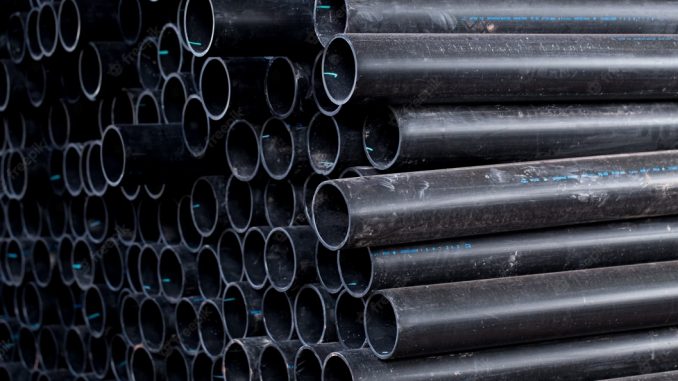
The versatility which rubber provides makes it a popular piping material – but like almost all types of pipe, it can sometimes require repair in the event of leaks and bursts.
A lot of people think rubber pipe repair is difficult. Rubber pipes are often formed in complicated shapes and crammed into cramped spaces, ruling out traditional solutions like clamps.
But rubber pipe repair need not be daunting nor challenging. These four rubber piping repair methods will help you make a cost-effective and quick fix to any kind of leaking or damaged rubber pipe
Fill the hole with rubber cement
If the rubber piping needing repair is suffering from only a pinhole leak, then the most straightforward repair method is to use rubber cement.
Which, just to confuse everyone, is actually a glue rather than cement. It is made up of liquified rubber and chemical solvents. As the glue dries, the solvents evaporate and the rubber forms a thin, solid layer.
Before using rubber cement to repair a pipe, the leak area should be thoroughly dried to enable a strong bond to take place.
Rubber cement is applied into the pinhole, with care taken to ensure it does not seep too deep and end up blocking the pipe.
Any blockage could lead to uneven builds of pressure when the pipe goes back into service, causing larger leaks to appear in future elsewhere on the line.
The rubber cement is then left to dry for at least one hour, after which the pipe can be turned back on. If there is no more leakage, than the repair has been a success.
Unfortunately, rubber cement is unsuitable for any leaks bigger than a pinhole. Using it on significant cracks or splits risks the glue entering too far into the pipe and as we have already explained, that is not good news.
Seal the leak with pipe repair tape
Pipe repair tape is the most versatile method for sealing leaking rubber piping. Tape will cover large areas of damage, can be applied around complex shapes like bends, and requires only the ability to wrap around the pipe. Virtually anyone can make a repair using it.
There are several different tape options which can be considered. Standard electrical tape can do a job, albeit temporarily and only for pipes or hoses carrying cold water.
Plumber’s tape is another possibility. It is waterproof as you would expect of a product manufactured for plumbers and although designed for thread sealing, it can be used for low-pressure leaks.
For longer-lasting repairs capable of withstanding pressure of up to 30bar, then use a self-amalgamating silicone pipe repair tape.
The tape is stretched by up to three times its length. As it is wrapped around the pipe requiring repair, it will fuse to form a solid rubber band over the leak area.
Multiple tapes can be applied over each other and these will also fuse to one another, building up the pressure resistance of a repair.
Silicone repair tapes can be applied to wet surfaces and whilst the pipe remains live. Repairs are as straightforward as wrapping enough tapes until the leak is fully arrested.
Replace the leaking section
Compared to other pipe materials, rubber piping is much easier to make a repair via cutting away and replacing the damaged section.
Using a sharp knife or other tool, the rubber pipe is sliced through to remove the leak area, leaving two separate sections.
An existing plastic or metal pipe of the same diameter is then cut to the correct size and attached to either end of the rubber using either electrical tape or self-fusing silicone repair tape.
Once the new section has been installed, the pipe is turned back on and tested for leakage. If no water is escaping, then the repair has been a success.
There are limits to where and when replacement of a leaking section can be used. It will only be effective on straight rubber piping which is a standard diameter matching plastic and metal pipes available to buy from DIY or plumbing stores.
Rebuild the damaged area with a rubber repair compound
When it comes to larger and more complex leaks or significant areas of damage which require rebuilding, a specialist product like a high-build rubber repair paste is required.
Rubber repair pastes are supplied in two parts. Part A and part B are mixed together before thickener is added until the desired consistency of paste is reached.
When it comes to rubber pipping repair, the paste needs to be on the thick side so that it can be applied without dripping into and blocking the pipe.
Once mixed, the paste is then spread over and carefully pushed into the area requiring repair. The paste will start to cure, forming a new rubber material.
Heavily scarred sections of rubber pipe or areas missing chunks can be seamlessly rebuilt using a repair paste, restoring strength and integrity.

Leave a Reply